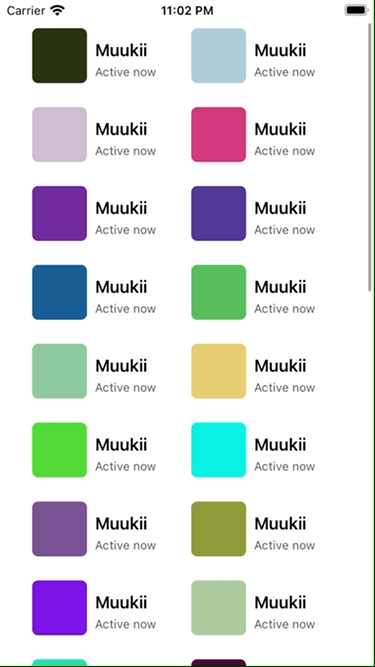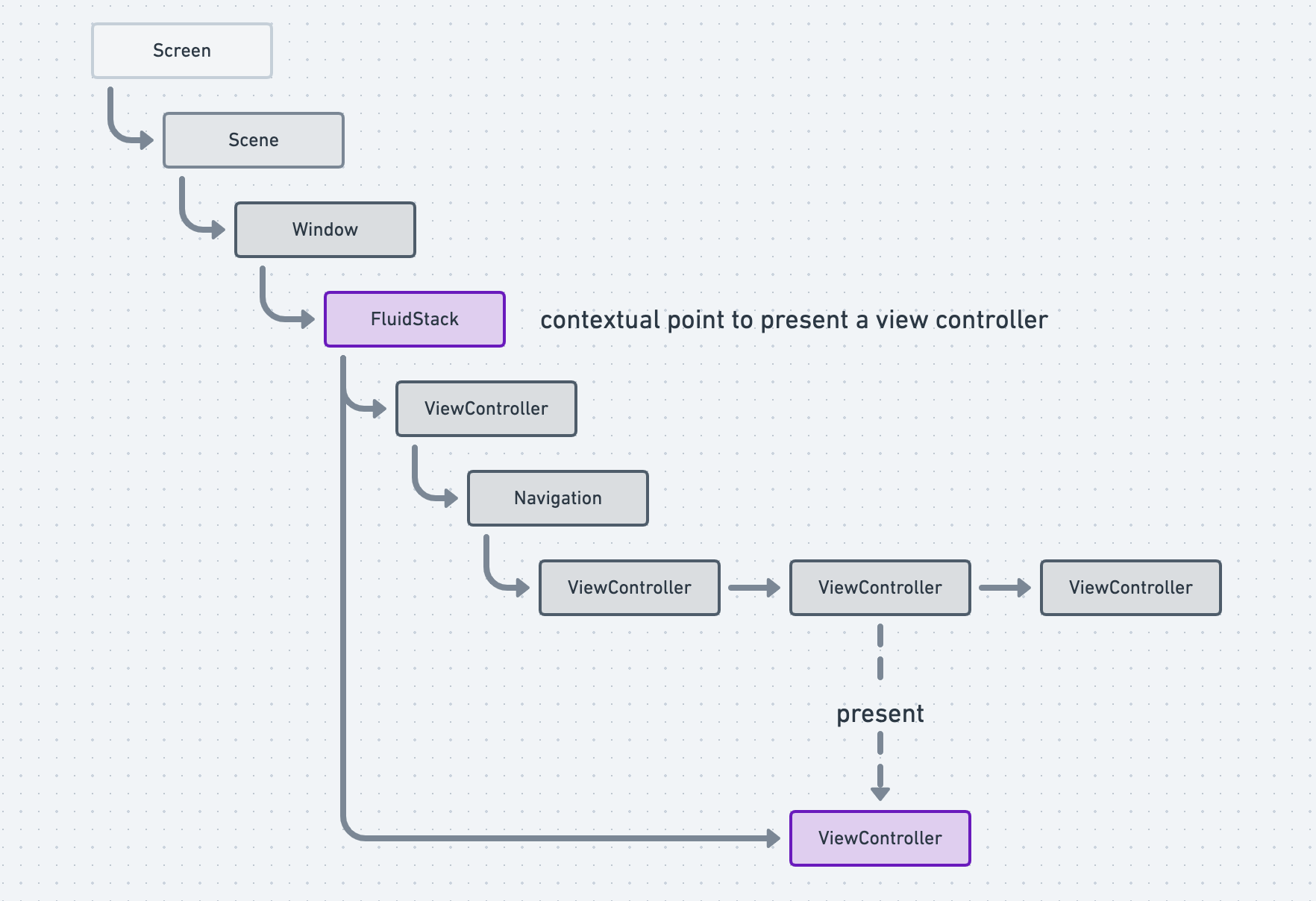https://github.com/fluidgroup/fluidinterfacekit
🌧 A framework that provides the advanced infrastructure for your iPhone apps
https://github.com/fluidgroup/fluidinterfacekit
animation fluid-interface instagram ios transition ui uikit
Last synced: 3 months ago
JSON representation
🌧 A framework that provides the advanced infrastructure for your iPhone apps
- Host: GitHub
- URL: https://github.com/fluidgroup/fluidinterfacekit
- Owner: FluidGroup
- License: mit
- Created: 2021-12-11T07:19:48.000Z (almost 4 years ago)
- Default Branch: main
- Last Pushed: 2024-10-16T23:34:28.000Z (about 1 year ago)
- Last Synced: 2024-10-29T12:58:49.204Z (about 1 year ago)
- Topics: animation, fluid-interface, instagram, ios, transition, ui, uikit
- Language: Swift
- Homepage: https://fluidgroup.github.io/FluidInterfaceKit/documentation/fluidinterfacekit/
- Size: 25.7 MB
- Stars: 116
- Watchers: 5
- Forks: 5
- Open Issues: 5
-
Metadata Files:
- Readme: README.md
- License: LICENSE
Awesome Lists containing this project
README
# 🌧 FluidInterfaceKit - A set of frameworks that provides advanced infrastructures for your iPhone apps (UIKit-based)
- FluidCore
- A set of utilities
- FluidRuntime
- A runtime library to enable hidden powers
- FluidGesture
- Makes a view draggable
- FluidKeyboardSupport
- Integrates the area of the keyboard with the contents of a view
- FluidPictureInPicture
- FluidSnackbar
- FluidStack
- Replacement for UINavigationController
- FluidStackRideauSupport
- FluidTooltipSupport
- Floating view over the specific point
- Displaying any target layer with touch event handling
# FluidStack
**FluidStack** provides the advanced infrastructure for your iPhone apps.
Built on top of UIKit, replace UIKit standard transitions with the custom components.
It provides components that make your app more flexible - interactive and interruptible transition, free to unwind view controllers without `pop` or `dismiss`.
That would fit to create fully customized UI apps such as Snapchat, Zenly, Uber, Instagram Threads.
FluidInterfaceKit's essential component is `FluidStackController`, which stacks view controllers with customized transitions.
Apps run with this component, only stacking but it can get flexibility instead.
> 💔
> Please take care of the risks to using this framework; the meaning of using this detaches from Apple's UIKit ecosystem.
For instance: the history menu of the back bar button, page-sheet modal, and accessibility.
> This framework tries to follow the updates of UIKit as long as.
[🔗 **Detailed Documentation**](https://fluidgroup.github.io/FluidInterfaceKit/documentation/fluidinterfacekit/)
# Showcase
|Instagram Threads like | Apple like |
|---|---|
| |
|  |
|
# Structure of App with FluidStack

# Motivation
Normally, UIKit allows us to get screen management with `UIViewController.present`, `UIViewController.dismiss`, `UINavigationController.push`, `UINavigationController.pop`.
In the case of a view controller that needs to display on modal and navigation, that view controller requires to support both.
In modal, what if it uses `navigationItem`, should be wrapped with `UINavigationController` to display.
Moreover, that view controller would consider how to dismiss itself unless handled by outside.
Pop or dismiss which depends on the context.
**FluidInterfaceKit** provides `FluidStackController`, which is similar to `UINavigationController`.
It offers all of the view controllers that are managed in stacking as a child of the stack.
Try to think of it with what if we're using `UINavigationController`.
All view controllers will display on that, and push to the next view controller, what if needed nesting, push another UINavigationController.
Expression of transition would not be a problem, we can create a custom transition, so it can be like a modal presentation - slide in from the bottom.
If the app runs like that, we only use `push` and `pop` to manage screens except for the special case of using `present` - UIAlertController or other modals in third-party libraries.
Still, modals work very well since nobody use presentation.
As above mentioned, `FluidStackController` is similar to `UINavigationController`, it just stacks view controllers that are managed as a child.
What difference with `UINavigationController` is **transitions**, it provides interfaces to create custom transition and it supports more flexibility.
Custom transitions that run with `UIViewControllerAnimatedTransitioning` have some limitations in modal-presentation and push-transition.
It supports cancellation, which would be a part of flexibility, but it's not enough.
Please see what happens in iOS Home Screen, it supports completely responding to user interaction - opening an app, canceling opening by Home bar, moving back the home, then opening the app again by touch.
# Setting up your app
**ExampleApp** in this project shows how setting up.
**FluidInterfaceKit-Demo** shows a lot of examples.
First of all, you need to put a `FluidStackController` in a root view controller for a `UIWindow`.
In Storyboard based app, set the entry pointed view controller as `FluidStackController` or subclass of it.
In Code based app, set a root view controller of `UIWindow` as `FluidStackController` or subclass of it.
**`didFinishLaunchingWithOptions` in AppDelegate**
```swift
let newWindow = UIWindow()
newWindow.rootViewController = RootViewController()
newWindow.makeKeyAndVisible()
window = newWindow
```
**RootViewController**
```swift
final class RootViewController: FluidViewController {
override func viewDidLoad() {
super.viewDidLoad()
view.backgroundColor = .systemBackground
// 📍
addContentViewController(FirstViewController(), transition: .disabled)
}
}
```
**FirstViewController**
```swift
final class FirstViewController: FluidViewController {
func runSomething() {
fluidPush(SecondViewController(), target: .current, relation: .hierarchicalNavigation)
}
}
```
**SecondViewController**
To dismiss itself, call `fluidPop()`
## FluidGesture

Making a view can be draggable in an easier way.
Supports dragging finished animation with moving another position respecting gesture's velocity using spring animation.
Rubber banding effect is built-in.
```swift
let draggableView: UIView
draggableView.makeDraggable(
descriptor: .init(
horizontal: .init(min: -200, max: 200, bandLength: 30),
vertical: .init(min: -200, max: 200, bandLength: 30),
handler: .init(
onStartDragging: {
},
onEndDragging: { velocity, offset, contentSize in
// return proposed offset to finish dragging
return .init(width: 0, height: 0)
}
)
)
)
```
[SwiftUI Version](https://github.com/FluidGroup/swiftui-snap-dragging-modifier)
---
[🔗 **Detailed Documentation**](https://fluidgroup.github.io/FluidInterfaceKit/documentation/fluidinterfacekit/)
# Muukii sponsors your contributions
I sponsor you with one-time sponsor tiers if you could have contributions.
- Improvement core components
- Improvement documentations
- Growing demo applications
# Authors
- [muukii](https://github.com/muukii)
- [shima11](https://github.com/shima11)
